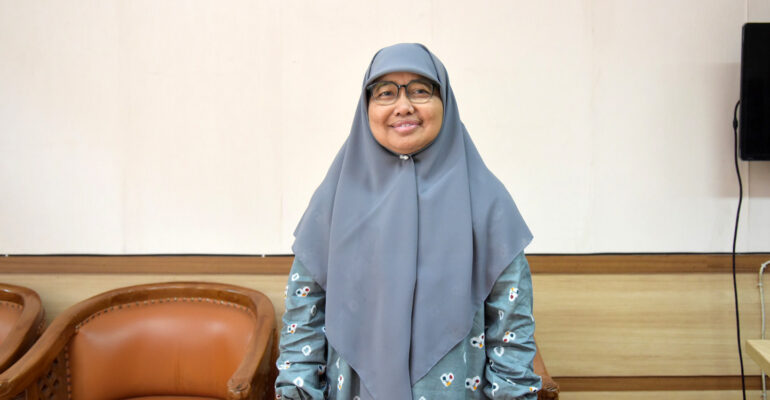Butterfly Population Is Declining, IPB University Researcher Gives Short-term and Long-term Solutions

The phenomenon of butterfly population decline is a serious concern. From one study, in the last two decades (2000-2020), America has lost 22 percent of its butterfly population.
Prof Noor Farikhah Haneda, Professor of IPB University at the Department of Silviculture, Faculty Forestry and Environment (Fahutan) explained that this phenomenon is influenced by various environmental factors such as pollution, climate change, and reduced availability of food plants and hosts.
The expert in forest entomology explained that the sensitivity of butterflies to environmental changes varies between types. Some butterflies are highly susceptible to pollution, while others are able to survive in polluted environments.
“This population decline is closely correlated with environmental quality, especially the availability of food plants and host plants for these beautiful winged insects,” she said.
Furthermore, Prof Noor compared butterfly populations in areas with different pollution levels, as well as at the border of forests and settlements. An overall decline in habitat quality contributed significantly to the decline in butterfly populations, where some species were able to adapt while others were not.
“Butterflies tend to use forests as their primary habitat. However, they also forage and move in open areas exposed to sunlight, including settlements,” she explains.
Real Ecological Impact
According to Prof Noor, the reduced butterfly population has a real impact on the ecosystem. This concerns the food web and the pollination process. The fewer butterflies there are, the less products are produced from plant pollination.
“Factors such as declining air quality, environment, food availability, and habitat loss are the main causes of this downward trend,” she said.
Prof Noor emphasized the importance of providing food for butterflies, one of which is by planting flowering plants.
As a short-term solution, providing liquid honey in certain areas can be done. Like the one at IPB Dramaga Campus, which is around the Faculty of Agriculture (Faperta) and Graha Widya Wisuda (GWW).
“The long-term solution is to plant flowering plants as a source of nectar for butterflies,” he said.
Development or Nature Conservation?
So far, there has been a dilemma between development and nature conservation. The existence of pollution along with development is inevitable.
“Pollution must come with development. However, this must be balanced with efforts to provide green open spaces and plant plants that feed butterflies,” said Prof Noor.
She added that the government has set regulations that require the provision of a certain percentage of green open space (RTH), including in industrial and factory areas. This provision aims to maintain environmental balance and improve the quality of life of the community.
In accordance with Law No. 26/2007 on Spatial Planning, the minimum RTH area must reach 30 percent of the total city area. Of this amount, 20 percent must be public green space and 10 percent private green space.
This regulation is strengthened through Government Regulation (PP) No. 26/2008 on the National Spatial Plan, and Minister of ATR/BPN Regulation No. 14/2022 on the Provision and Utilization of Green Open Space.
In addition, the existence of urban forests is also regulated in Government Regulation No. 63 of 2002, which stipulates that the area of urban forests must cover at least 10 percent of the city area as part of RTH.
However, Prof Noor said, the biggest challenge lies in the implementation and supervision of this regulation. Local governments are expected to conduct strict supervision to ensure that each industrial estate complies with this provision.
This step is considered important to maintain the balance of the ecosystem and provide habitat and food sources for insects such as butterflies in the midst of rapid development.
“A wise and integrated policy between economic development and environmental conservation is needed to maintain biodiversity, including the survival of butterflies,” she concluded. (US) (IAAS/LAN)



